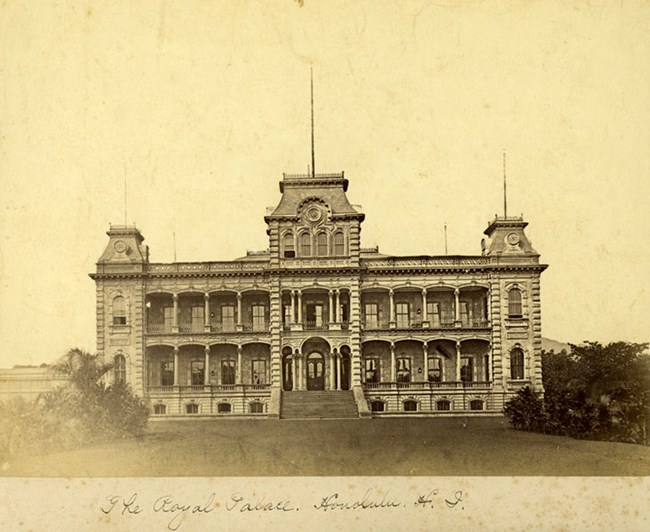Part of a series of articles titled Creative Teaching with Historic Places: Selections from CRM Vol 23 no 8 (2000).
Article
History in the Hands of Tomorrow's Citizens

Published by the National Park Service, Cultural Resources
by Carol D. Shull and Beth M. Boland
A decade ago, amidst widespread interest in the quality of education in America, the National Register of Historic Places began seeking ways to make teachers and others more aware of the educational value of historic places and documentation about them. Formally organized in 1991, Teaching with Historic Places (TwHP) set out to demonstrate how historic places – as both tangible links to the past and also sources of evidence – can help teach academic subjects, raise awareness of available information about places, and foster an appreciation for the value of cultural resources.
Advised of the constraints under which teachers work and the lack of training in using places in the classroom, TwHP heeded the recommendation of a group of educators to develop a series of prototype lesson plans. Workshops and publications to guide people in developing their own educational materials and projects soon followed. The TwHP web site contains detailed information on the program, lesson plans, ways in which the National Register can assist teachers, and additional features.
Over the years, many have told us how they have implemented or been inspired by TwHP. At the same time, we continue to field questions about how to integrate our lesson plans into the classroom or interpretive programs, and how to adapt our “field studies” and other programs and methods to local needs. In response, we asked a few practitioners to describe how they have applied and benefitted from TwHP. In addition to providing a sample of imaginative ways to use places in education, “Creative Teaching with Historic Places” complements and updates the 1993 CRM that introduced TwHP to a wide audience. While the information in the current issue will appeal primarily to those engaged in teaching and learning, we hope its contents will interest a wider spectrum of those committed to increasing public appreciation and protection of cultural resources.
With some liberties, this issue is organized generally as follows: Early articles discuss the power places have to connect with people, inspire learning, and help meet curriculum requirements. The next section focuses principally on TwHP lesson plans – their creation and evolution in partnership with educators, contribution to the classroom, and use as models. Following articles present a variety of ways in which individuals and organizations have employed TwHP ideas and materials to form partnerships, train teachers, and enhance educational activities. Closing articles place TwHP within the context of broader National Park Service programs and initiatives, including Parks and Classrooms, use of the internet, outreach to culturally diverse groups, and the National Register of Historic Places.
The NPS and the National Register have been fortunate to collaborate with many valuable partners through TwHP. These include the National Trust for Historic Preservation; the National Council for the Social Studies; the National Conference of State Historic Preservation Officers; the National Park Foundation; the National Archives; National History Day; numerous classroom teachers, curriculum specialists, college and university professors, preservationists, site interpreters; and others. In this we have practiced what we preach: bringing professionals in preservation, history, education, interpretation, and other fields together for their mutual advantage and for the benefit of the young people in whose hands the welfare of our nation’s cultural resources will rest in the future.
At the time of publication, Carol D. Shull was the Keeper of the National Register of Historic Places and the Chief of the National Historic Landmarks Survey; Beth Boland was an historian with the National Register and TwHP Program Manager.
Last updated: July 2, 2019
